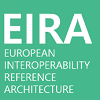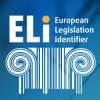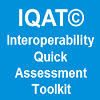Recommendation 22 | Interoperability layer: Interoperability governance
Use a structured, transparent, objective and common approach to assessing and selecting standards and specifications. Take into account relevant EU recommendations and seek to make the approach consistent across borders.
Solutions
| List of all available solutions that implement this recommendation |
|---|

|
By using common assessment method for standards and technical specifications (CAMSS) for each technical specification, the library provides access to a structured, transparent, objective and common approach to assessing and selecting standards and specifications. |

|
CAMSS List of Standards is a structured, transparent, objective and common approach to select standards. |

|
The CAMSS Ontology is a formal description of knowledge as a set of concepts within the CAMSS domain and the axioms connecting its concepts and allowing for logic inferences. |

|
CAMSS tools enable a structured, transparent, objective and common approach to assessing and selecting standards and specifications. |

|
CAMSSaaS provides a structured, transparent, objective and common approach to assessing and selecting standards and specifications. |

|
Thanks to repository of tools available on the BDTI, project owners are encouraged to select and implement solutions that are interoperable and in line with European standards. |

|
The use of CISE specifications and data models, helps to ensure that public administrations are taking into account relevant EU recommendations on standards and specifications in the maritime domain and are seeking to make the approach consistent across borders. |

|
All Member States participated to the selection and development of the AS4 standard thus ensuring a transparent and rigorous approach to its selection. |

|
Thanks to services like the Interoperability Readiness Testing platform, eID promotes an objective and common approach to assess and select standards and specifications. |

|
EIRA provides a framework that can facilitate the identification of standards and specifications linked to the most salient interoperability building blocks. |

|
The use of ELI Annotation tool helps to ensure a consistent approach to the use of ELI standard across borders. |

|
Thanks to services like the electronic signature conformance checker, eSignature tries to put in place an objective and common approach to assessing and selecting standards. |

Location Framework Blueprint
|
As part of the implementation of recommendation 12, the EULF Blueprint stipulates that Member States should apply INSPIRE and, where necessary, other geo-standards elaborated at international level (W3C, OGC, OASIS…) and European level (Copernicus, EIF, CEN TC/287…). |

|
The use of the common specification helps to ensure consistency of legal mandates and power descriptions across European borders. |

|
The IQAT assesses whether a transparent and objective approach to selecting standards when selecting or procuring solutions is in place. |

|
The Reference Architecture contains several building blocks related to standard selection when it comes to data management. |

|
The Sharing and Reuse Framework recommends public administrations to consult the catalogue of ICT Standards for Public Procurement and to also compile their own catalogues when using common standards. |
|
OpenPM² |
OpenPM² is a project management methodology and it can provide a structured, transparent, objective and common approach to assessing and selecting standards and specifications. |




